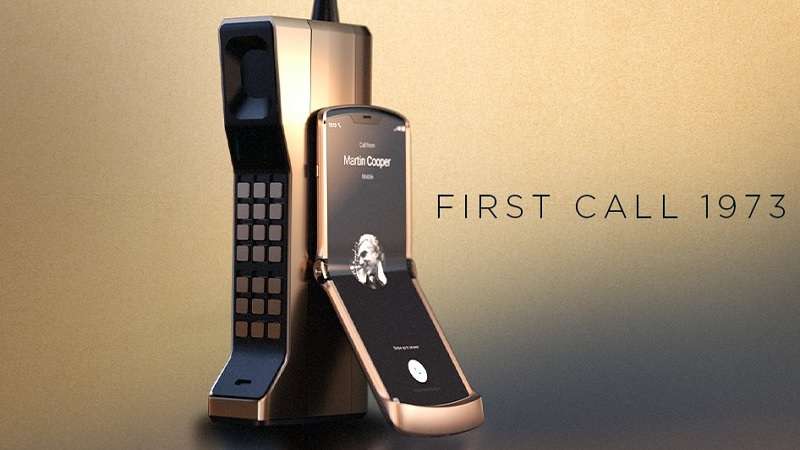Motorola has a long history of driving innovation in the mobile industry, with groundbreaking achievements such as the world’s first commercially available 5G-upgradable smartphone and the first clamshell smartphone.
However, the most significant moment in the history of mobile technology occurred exactly 50 years ago on April 3, 1973.
Martin Cooper, former Motorola VP and Director of R&D, used the Motorola DynaTAC 8000X to make the world’s first commercial mobile phone call from Sixth Avenue in New York City. This event marked a pivotal moment in society, allowing people to communicate with anyone, anywhere, at any time, without being tethered to a landline or waiting for a page.
Martin Cooper, the inventor of the first portable cell phone, made the historic first public phone call on April 3, 1973, and he knew that this was just the beginning.
He believed that Motorola and the cellphone industry were starting a revolution in personal communications, and since then, Motorola has continued to be at the forefront of many other groundbreaking technologies and innovations that have shaped the world we live in.
Motorola has come a long way since the release of the DynaTAC 8000X, which was more than a foot long and weighed almost 2 pounds at the time. One of the iconic devices that Motorola introduced was the original RAZR V3, which came to market in the early 2000s.
The RAZR V3 was popular for its unique clamshell design and thin appearance, and it continues to be an iconic piece of technology worldwide.
In recent times, Motorola achieved another significant milestone when the moto z3, paired with the 5G moto modTM, became the world’s first commercially available smartphone to establish a connection with 5G on April 3, 2019. Motorola aims to democratize 5G technology and provide blazing-fast 5G speeds to the mid-tier segment through their moto g line.
Motorola has also been instrumental in pushing the boundaries of alternative form factors. In 2019, Motorola launched the world’s first clamshell smartphone – the motorola razr – which brought consumers portability without sacrificing the functionalities of a full-sized smartphone display. Motorola also introduced innovations like the neckband, a wearable 5G device that redefines the role of the smartphone by allowing you to display content on more immersive screens around you.
Recently, Motorola unveiled a rollable smartphone concept device, and they are excited to continue testing the boundaries of mobile technology and sharing more innovations in this space.
